Word Confusion: -ing and -ed Endings
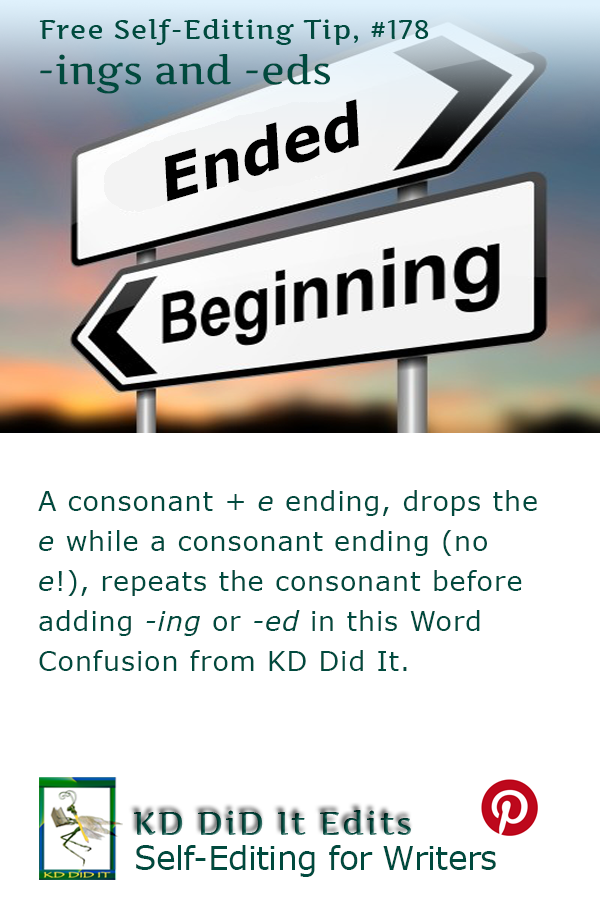
Two verb endings — -ing and -ed — when you encounter a “consonant + e” or a “consonant-vowel-consonant” are treated differently in this Word Confusion from KD Did It.

Two verb endings — -ing and -ed — when you encounter a “consonant + e” or a “consonant-vowel-consonant” are treated differently in this Word Confusion from KD Did It.
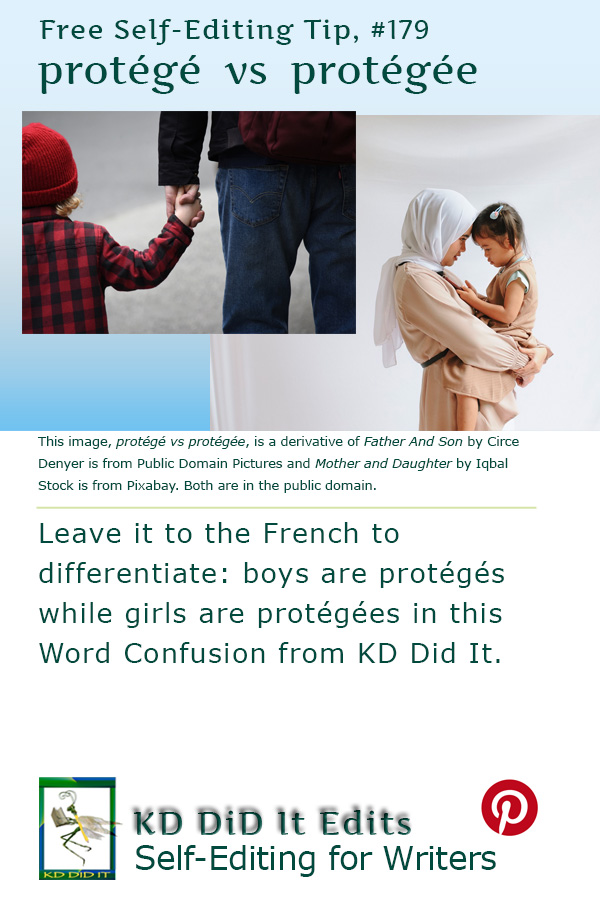
Another French distinction between the male and female versions of protégé(é) a self-editing writer should know in this Word Confusion from KD Did It.

It’s not great when the writing grates on you in this Word Confusion from KD Did It.
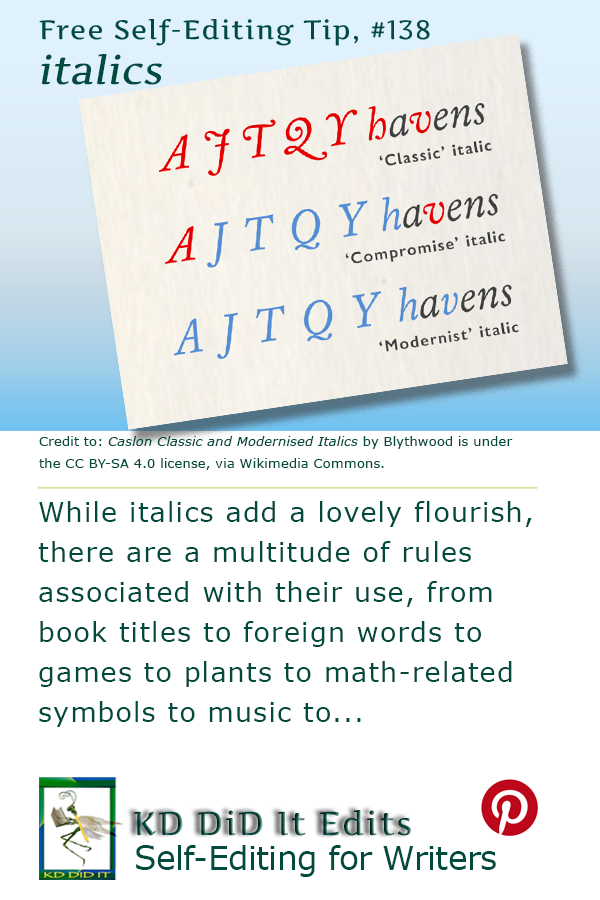
The rules for italicizing are myriad and convoluted. This Formatting Tip from KD Did It on italics is definitely one to bookmark.
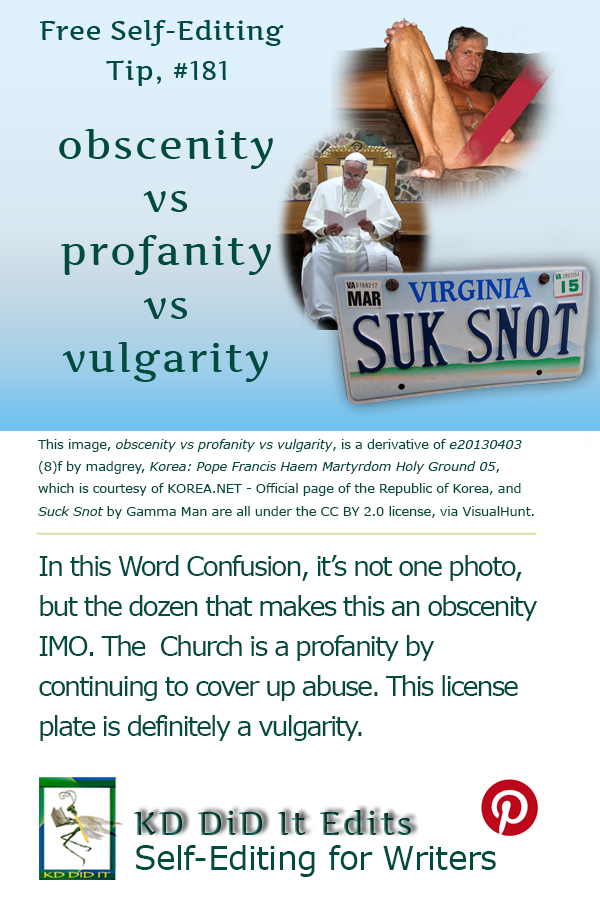
The evolution of obscenity, profanity, and vulgarity is an interesting path and their roots have all the clues to this Word Confusion from KD Did It.
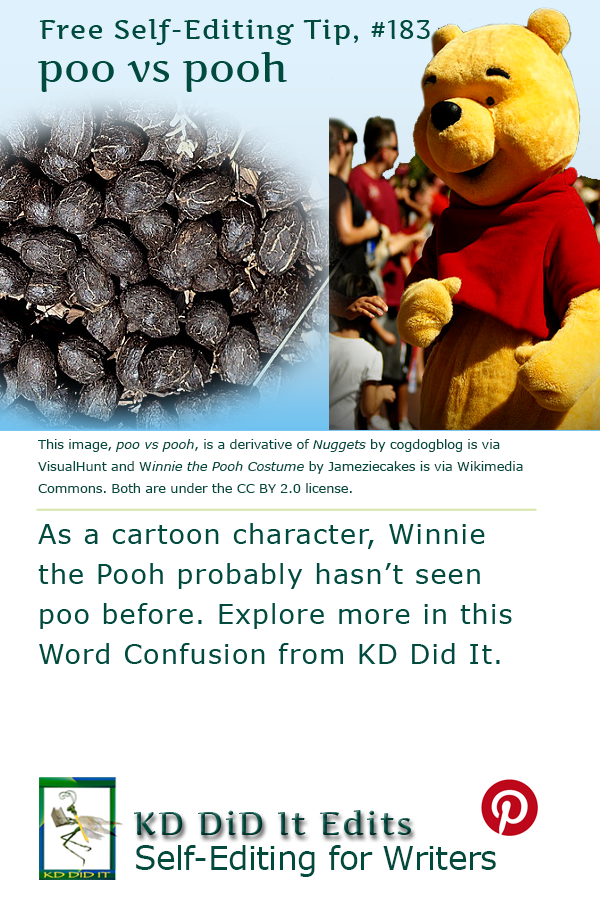
Who knew? Poo is pooh or pooh can be poo. I’d be careful in an historical novel, though! Explore more in this Word Confusion from KD Did It.

Bookmark this post on capitalization with its rules on where, when, and how to capitalize directions, streets, products, compound words, honorifics, and more in this Formatting Tip from KD Did It.

And you thought you knew how to moan… You’ve probably been doing it all wrong…in writing. Discover how to moan “properly” lol in text.
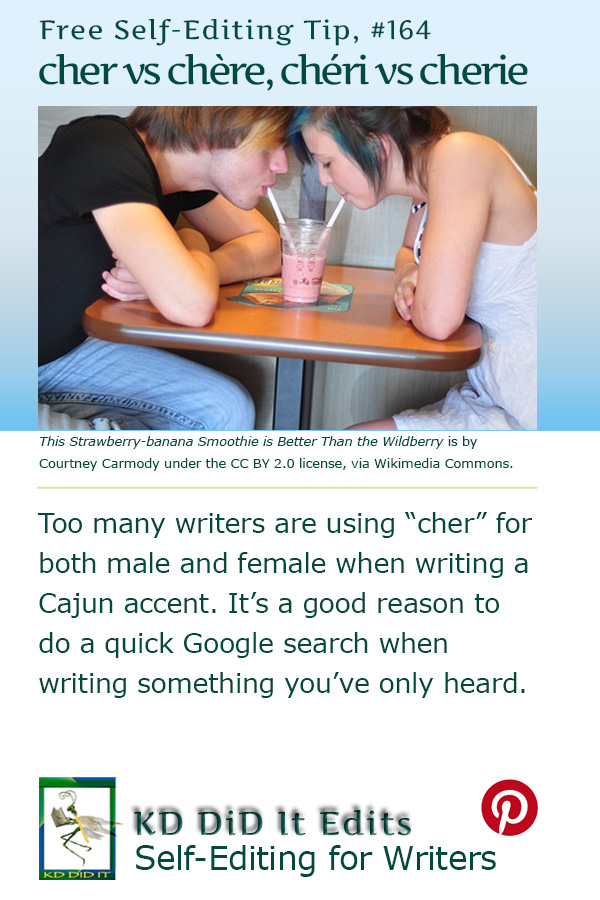
A Word Confusion post for self-editing writers using terms of endearment, especially the cher, chère, chéri, and chérie in Louisiana.
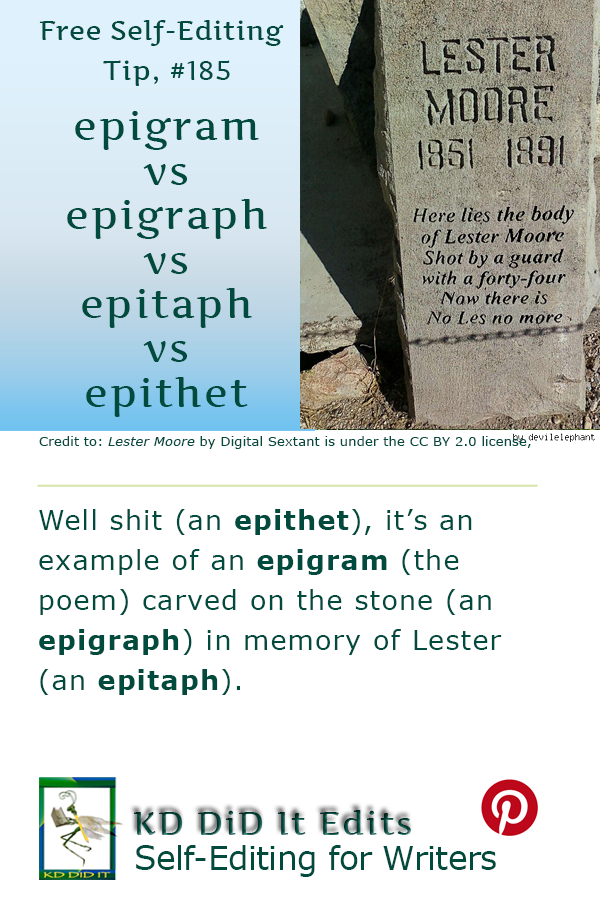
Epigrams and epigraphs are both inscribed but for different purposes while epithets can be a plus or a minus. As for those epitaphs, they’re usually epigrams in this Word Confusion.